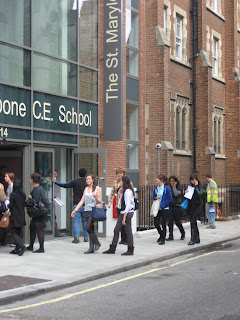
I improved the Masthead by having a backdrop behind the actual Masthead. I used the colour purple to put behind the text in black to make it connect to Melissa’s clothes. Also I did this, to make the Masthead more appealing and eye-catching to look at.
To improve this magazine, I improved a lot on the main Kicker, by changing the colour from white to black. I did this because it was unclear and hard to read on a blue background from the feedback which I got. I changed the colour to black and also included a backdrop of the colour purple to match Melissa’s clothes. I chose to do to make the text relate to what Melissa is wearing and connect together.
For the explanatory text under the Main Kicker, I aligned this to the right as this is what makes the eye order, from left to right. To also make it attractive I have changed the colour to black instead of white, due to the feedback which I got back. Finally I included a backdrop of the colour white, as white and black both connect and make the text stand out more.
I also improved my magazine by using a grid. I used a grid to align both my kickers on the left hand side. I have aligned the kickers on the left hand side, to make it look more professional as well as eye-catching for the audience. As you can see ‘This’ is aligned with ‘Read’ and ‘Decade.’ And ‘your’ is aligned with ‘Outbreak.’ This makes it more simple and clear to readm for the target audience.
I also improved the explanatory text under the third Kicker. I did the same thing by using the colour white, to make the text stand out more. As well as this, I have also completely changed the text colour from white to black, so then it will be easier for the audience to read. As well as that, the backdrop colour which I used was white, to make it readable and clear.
I also improved the explanatory text under the second Kicker. I used the colour white, to make the text stand out more. As well as this, I have completely changed the text colour from white to black, so then it will be easier for the audience to read. I also had a backdrop of the colour white to make it more appealing to the readers.
Backdrop Shadow
To have a backdrop shadow on my text, I first duplicated the layer which contained the text which I wanted a backdrop on. I then choose by colour by using the 'Eyedropper Tool,' I used this tool to get the exact and precise colour of Melissa's clothes, I decided to choose the colour purple from her top. I then used the 'Horizontal Type Tool' to highlight the text and clicked on the colour palette at the bottom left hand corner. There, it should have auotmactically changed the colour which you have chosen (Mine would have been the purple from Melissa's clothes, then click it and click 'Ok.' After this, move the duplicate layer on top of the original layer. By doing this it will put the duplicate layer of purple behind and bring the 'black' text at the front. I then clicked on the 'black' text and moved it around by using the left and right buttons on the keyboard to give a backdrop shadow behind the text.













